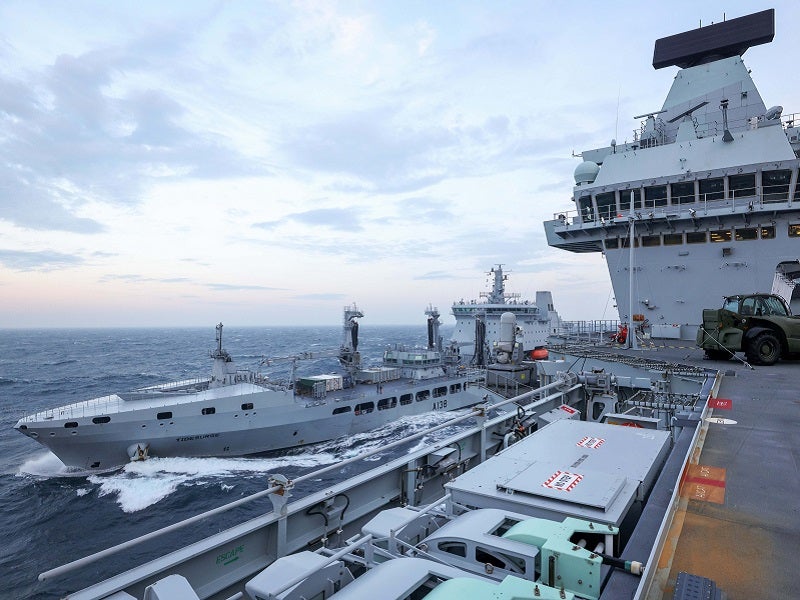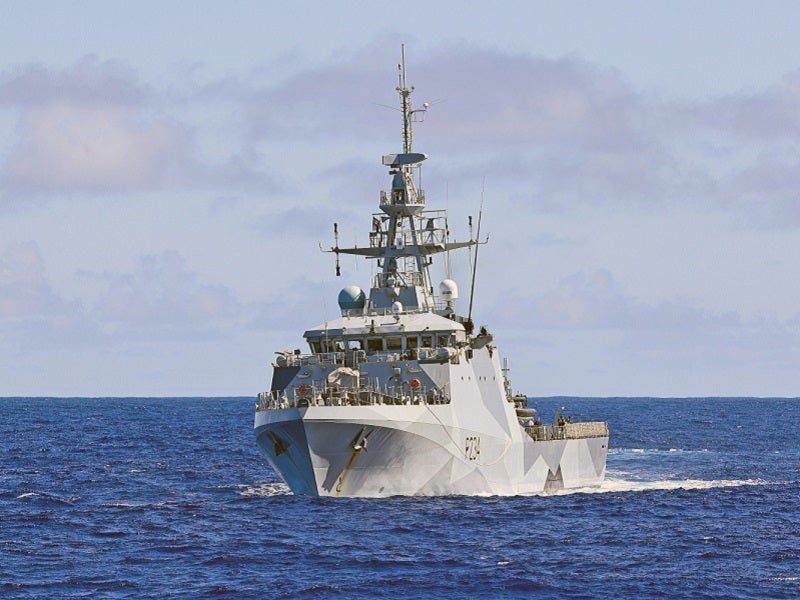Navies are realising the importance of reducing emissions as the future of our world and the reputation of the country they represent depends on it. Simon Newman, principal engineer, and Thomas Beard, senior analysis engineer, BMT, explore the issues navies face in their quest for decarbonisation.
In doing this, the UK MoD recently published its strategic approach to sustainability and climate change, with three stages outlined to ensure it will be able to meet the 2050 target. These stages are; addressing projects already planned, reducing emissions using existing and emerging technology while building resilience in the supply chain, estate and future equipment, and harnessing novel technologies to build resilience and further reduce emissions.
What isn’t clear from the approach outlined by the MoD, is how this carbon-reduction will be enacted in practice for Royal Navy legacy and new vessels. And this is the same for many if not all leading global navies. However, for most it is recognised that the targets for the navies themselves might not be complete net zero, but a push to reduce emissions as much as possible.
Naval vs commercial operations
The commercial marine sector continues to push forward with trials of new fuels and technologies from digital twinning to the use of automation in an effort to improve vessel efficiency and drive decarbonisation efforts that will eliminate dependence on fossil fuels. By contrast, front-line naval vessels have been slower to adopt tools and technologies that will move operations towards low or zero carbon.
In part this is due to a range of considerations that must be made for defence and security that differ from the commercial shipping sector, from the need for secure and reliable fuel supply across global operations that call for a continuous need to bunker in different ports around the world, to interoperability with other navies, battle survivability, diversity of vessel age and type, and variability of routes and roles.
How well do you really know your competitors?
Access the most comprehensive Company Profiles on the market, powered by GlobalData. Save hours of research. Gain competitive edge.

Thank you!
Your download email will arrive shortly
Not ready to buy yet? Download a free sample
We are confident about the unique quality of our Company Profiles. However, we want you to make the most beneficial decision for your business, so we offer a free sample that you can download by submitting the below form
By GlobalDataThe solutions for naval shipping will in many respects be different to those followed by the commercial sector. However, improvements will need to be made that ensures both commercial ships and naval vessels are able to meet their emission reduction commitments, whilst not compromising their ability to travel safely through ports and busy waterways.
In addition to operational considerations, navies must consider that vessels often act as travelling embassies when operating overseas, and there has been a growing acknowledgement of the need for vessels to exemplify the principles of the country they represent. Increasingly, this requires navies to show their commitment to emission reduction as developed nations around the world drive an increasingly stringent focus on limiting the effects of climate change.
The variability and diversity challenge
Unlike commercial vessels, naval vessels do not usually follow a fixed route of operation, and their role or initial use-case may change through life due to developing operational requirements across the extended periods of time vessels are operational.
This high-variability of operations, often far removed from the initial design-point, provides a significant challenge for baselining the performance prediction and the design and implementation of certain measures to reduce CO2. This contrasts with a commercial vessel which often conform to a much more fixed operating regime where new energy-saving technologies can be optimised to deliver maximum efficiency gains.
Navies also operate a vast array of differing vessel types to manage, from small craft up to aircraft carriers, and as such any measures to reducing the carbon footprint will vary from vessel to vessel. For example, it may be appropriate for some small inshore vessels to use battery power for propulsion, but not for the bulk of the fleet which would need a low carbon fuel.
Navy future fuel constraints
As an example of an operational requirement most navies must consider when looking at alternative fuels, replenishment at sea (RAS) is a critical operation which all front-line warships conduct where liquid and solid stores are passed from one vessel to the other. RAS operations are hazardous even with conventional fuel, involving a coordinated effort by both the receiving and supplying vessel crews.

The use of gaseous or cryogenic, volatile or toxic alternative fuels would drive a radical change to the RAS equipment fitted to all warships and replenishment vessels, as well as increasing safety-management requirements to manage risks regarding leaks, spillages and managing emergency break-away procedures.
In addition, front-line vessels are designed for the battle environment and so the properties of any fuel need to be carefully considered in terms of the location and means of storage, particularly in the event of a potential release of explosive or toxic fuels through battle-damage.
Most alternative fuels except for methanol would require custom storage tanks that also have the ability to maintain a safe storage temperature or contain pressurised fuel. This would result not only in additional equipment and structural requirements, but also lead to additional power demands that potentially negate some of the efficiencies these alternative fuels deliver.
From a safety perspective it goes without saying, the consequences of placing higher-risk fuels in the wrong place could be catastrophic both for the vessel and the crew.
Future fuel options
As nations around the world start to bring in legislation such as the banning of the use of fossil fuels, navies just like commercial operators will be expected to meet regulations when entering international ports. There are three low GHG fuels widely anticipated to provide the bulk of the marine fuel supply in the future. These are methanol, ammonia and hydrogen.
However, the reality is that low carbon fuels won’t be widely available across global ports in the short to medium term, and when they are there will likely be huge competition for their use including from the commercial shipping industry.
Also, in times of conflict or political unrest fuel availability may also be compromised. Because of this, navies will need to have the flexibility to use fossil fuels for some time to come, while using low carbon alternative fuels when available. This coincidentally aligns with current engine developments, with manufacturers developing dual fuel conversion packages allowing the engine to operate on both diesel fuel and a low-carbon fuel such as methanol.
Although the conversion of commercial vessels to low-carbon fuels has been successfully demonstrated, the unique set of requirements and constraints already discussed make this more challenging for in-service naval vessels, and so this may not be an option for much of the legacy fleet.
However, there are other energy efficiencies that can be made today to help ensure a rapid move towards reduced emissions.
Energy saving technologies for naval vessels
There are a number of energy-saving measures that should be considered for navies that can help them meet their emission reduction targets.
One of the simplest and most obvious win is replacing legacy light bulbs with LED lights which are much more energy efficient. Another low-hanging fruit is the use of modern antifouling coatings applied to the hull and maintained through life. Energy storage systems such as batteries can enable a vessel to operate more efficiently for some applications by smoothing out transient power demand, and by providing standby power so allowing idling generators to be shutdown.
Another way of ensuring optimum efficiency is to incorporate a waste heat recovery system such as an Organic Rankine Cycle (ORC) so that heat energy from the engines can be recovered.
Net zero future
With countries legislating to ensure net zero commitments are achieved it is clear that there are actions that navies must now take to reduce their carbon footprint, taking operations today and in the future into account.
The fuel of choice for navies as well as commercial shipping is likely to be debated for some time to come, but there will need to be some level of universality to ensure the efficient and effective operation of defence operations around the world, and even amid these complexities there are steps navies can be taking today to reduce the carbon footprint of their operations.





Related Company Profiles
BMT International S.A
Ministry of Defence
Royal Navy